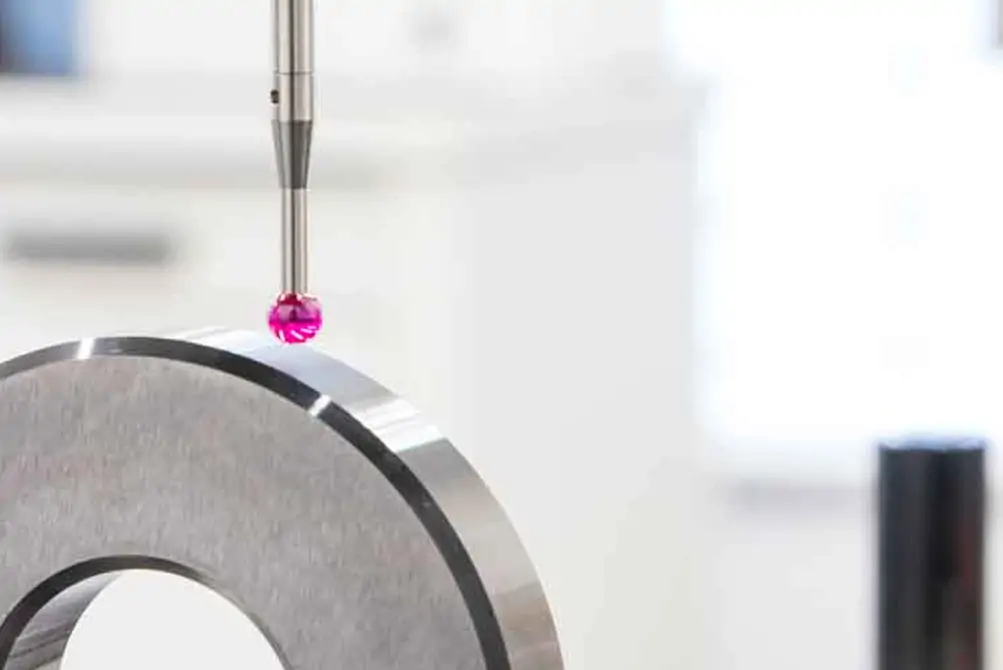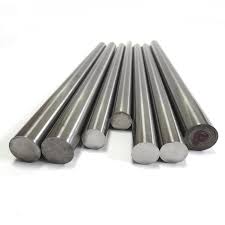A BH curve, or magnetic hysteresis loop, illustrates the relationship between the magnetic field strength (H) and the magnetic flux density (B) in a material. This curve is plotted by applying a magnetic field to a ferromagnetic material and measuring how the magnetic flux density changes. As you apply a magnetic field to a ferromagnetic material, the magnetic domains within it align with the field. This alignment increases the material’s magnetic flux density, which is a measure of the material’s magnetic response. When the field is removed, the domains don’t completely return to their original orientation, creating a residual magnetism known as remanence. This hysteresis effect is what gives the BH curve its looped shape and provides insight into the material’s magnetic behavior.
Key Terms in the BH Curve
- Magnetic Saturation: The point at which an increase in the applied magnetic field does not increase magnetic flux density. At this stage, all the magnetic domains are aligned, and the material cannot be further magnetized.
- Coercivity: The required intensity of the magnetic field to reduce the magnetization of a material to zero after it has reached saturation. This property is crucial in determining the material’s resistance to becoming demagnetized.
- Remanence (Residual Magnetism): The level of magnetization that remains in a material after the external magnetic field is removed. This property is important for applications that require a persistent magnetic field.
- Permeability: The measure of how easily a material can become magnetized. High permeability indicates that a material can efficiently carry magnetic flux, making it ideal for applications where rapid changes in magnetization are needed.
Soft Magnetic Materials
Soft magnetic materials are characterized by their low coercivity, which means they can easily gain and lose their magnetization. This property makes them ideal for applications that require frequent and rapid changes in magnetization. These materials are primarily used in applications that require rapid magnetization and demagnetization, such as transformers and inductors. Their ability to quickly respond to magnetic fields without significant energy loss makes them highly efficient for these purposes.
Characteristics of Soft Magnetic Materials
- Low Coercivity: Soft magnetic materials have a small hysteresis loop, indicating low energy loss during magnetization cycles. This makes them suitable for applications where minimizing energy waste is crucial.
- High Permeability: These materials can easily become magnetized, which is ideal for applications where magnetic fields need to change quickly. Their high permeability allows for efficient magnetic field conduction.
- Low Core Loss: Due to their low hysteresis loss, soft magnetic materials are efficient in minimizing energy waste. This characteristic is particularly important in reducing heat generation and improving the overall efficiency of electrical devices.
Applications of Soft Magnetic Materials
- Transformers: Soft magnetic materials are used in transformer cores to efficiently transfer electrical energy between circuits. Their low core loss and high permeability make them essential for reducing energy loss in power transmission.
- Inductors: These materials are used in inductors to store energy in magnetic fields, enhancing the performance of electronic circuits. Their rapid response to changing magnetic fields makes them indispensable in applications like power supplies and RF circuits.
- Magnetic Amplifiers and Chokes: Soft magnetic materials are also used in magnetic amplifiers and chokes, where they help control and stabilize electrical currents. Their ability to handle high-frequency signals without significant energy loss is crucial in these applications.
Hard Magnetic Materials
Hard magnetic materials, also known as permanent magnets, possess high coercivity, which means they retain their magnetization even after the external magnetic field is removed. This property makes them ideal for applications where a persistent magnetic field is essential. These materials are widely used in applications where a stable magnetic field is needed, such as in motors, generators, and magnetic storage devices.
Characteristics of Hard Magnetic Materials
- High Coercivity: Hard magnetic materials have a large hysteresis loop, indicating strong resistance to demagnetization. This property is vital for maintaining a stable magnetic field over time.
- High Remanence: These materials maintain a significant level of magnetization without the need for an external magnetic field. This characteristic is crucial for applications requiring a constant magnetic force.
- High Energy Product: Hard magnetic materials have a high energy product, a measure of the stored magnetic energy. This makes them powerful and effective in generating strong magnetic fields.
Applications of Hard Magnetic Materials
- Permanent Magnets: Hard magnetic materials are used in permanent magnets for motors, generators, and magnetic storage devices. Their ability to provide a consistent magnetic field is essential for the reliable operation of these devices.
- Sensors and Actuators: These materials are employed in sensors and actuators where a stable and strong magnetic field is required. Their high coercivity ensures that the magnetic field remains unaffected by external influences.
- Magnetic Couplings and Bearings: Hard magnetic materials are also used in magnetic couplings and bearings, where they provide frictionless and wear-free operation. Their durability and strength make them ideal for these demanding applications.
Comparing Soft and Hard Magnetic Materials
Both soft and hard magnetic materials play crucial roles in modern technology, but their applications are vastly different due to their distinct magnetic properties. Understanding these differences is key to selecting the right material for specific applications. Here’s a quick comparison:
- Coercivity: Soft magnetic materials have low coercivity, while hard magnetic materials have high coercivity. This difference determines how easily a material can be magnetized and demagnetized.
- Applications: Soft magnetic materials are used where rapid changes in magnetization are required, whereas hard magnetic materials are used where a permanent magnetic field is needed. This distinction is critical in designing devices that rely on magnetic properties.
- Energy Loss: Soft magnetic materials exhibit low energy loss due to their narrow hysteresis loops, whereas hard magnetic materials have higher energy loss due to their wider loops. This factor affects the efficiency and performance of magnetic-based devices.
Understanding Core Loss and Energy Product
Core Loss
Core loss in magnetic materials occurs due to hysteresis and eddy current losses. Hysteresis loss is associated with the energy dissipated as heat during magnetization cycles, while eddy current loss is caused by circulating currents within the material. It’s essential to minimize core loss in applications like transformers to enhance efficiency. Soft magnetic materials, with their low hysteresis loss, are preferred for such applications. By reducing core loss, these materials contribute to lower operating temperatures and improved energy efficiency.
Energy Product
The energy product is a measure of a magnet’s strength, indicating the amount of energy stored in a magnetic field. It is a critical parameter for determining the effectiveness of a magnet in generating a magnetic force. Hard magnetic materials, with their high energy product, are suitable for applications requiring strong and persistent magnetic fields. This property makes them indispensable in devices that need a reliable and powerful magnetic field, such as in high-performance motors and generators.
Conclusion
The BH curve is a fundamental tool in understanding the magnetic properties of materials. By examining the hysteresis loop, we can discern the differences between soft and hard magnetic materials, leading to informed choices in their applications. Whether you’re designing transformers, inductors, or permanent magnets, comprehending these properties ensures you harness the full potential of magnetic materials, enhancing the performance and efficiency of your devices. The ability to predict and control magnetic behavior is crucial for optimizing device functionality and energy consumption.
In summary, soft magnetic materials are ideal for applications demanding rapid magnetization changes, while hard magnetic materials excel in scenarios requiring enduring magnetic fields. By leveraging the unique properties of these materials, you can optimize your designs for energy efficiency and performance. Understanding the BH curve allows you to tailor your material selection to the specific needs of your application, ensuring that your devices operate at their best, whether in industrial, consumer, or specialized applications.









